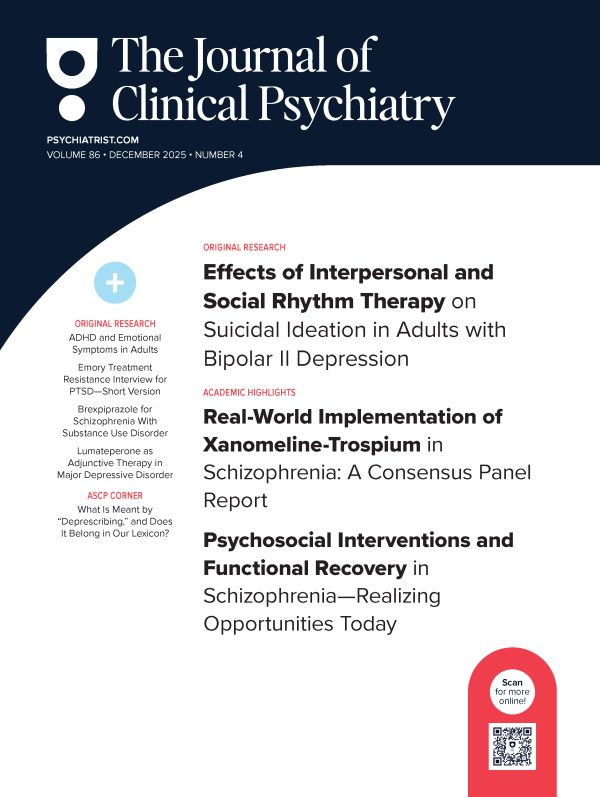Background: In controlled studies of patientswith schizophrenia, the atypical antipsychotic olanzapine hasbeen shown to be more effective in the treatment of positive andnegative symptoms compared with haloperidol at doses of 10mg/day. However, little is known about the efficacy of olanzapinein patients with psychotic mood disorders. The purpose of thisstudy was to assess the efficacy of olanzapine in the treatmentof these psychotic mood disorders in comparison with nonaffectivepsychotic disorders and to identify clinical factors associatedwith olanzapine response.
Method: In a naturalistic setting, by reviewingmedical records, we assessed response to olanzapine and factorsassociated with response to olanzapine in 150 consecutivepatients newly treated with the drug at a nonprofit academicpsychiatric hospital.
Results: Patients displaying amoderate-to-marked response to olanzapine were more likely to beyounger; be female; receive a diagnosis of bipolar disorder; andhave a shorter duration of illness, shorter length of stay priorto olanzapine, and longer duration of trial.
Conclusion: Olanzapine may be a usefulalternative or adjunctive treatment for patients with bipolardisorder.
Please sign in or purchase this PDF for $40.00.



